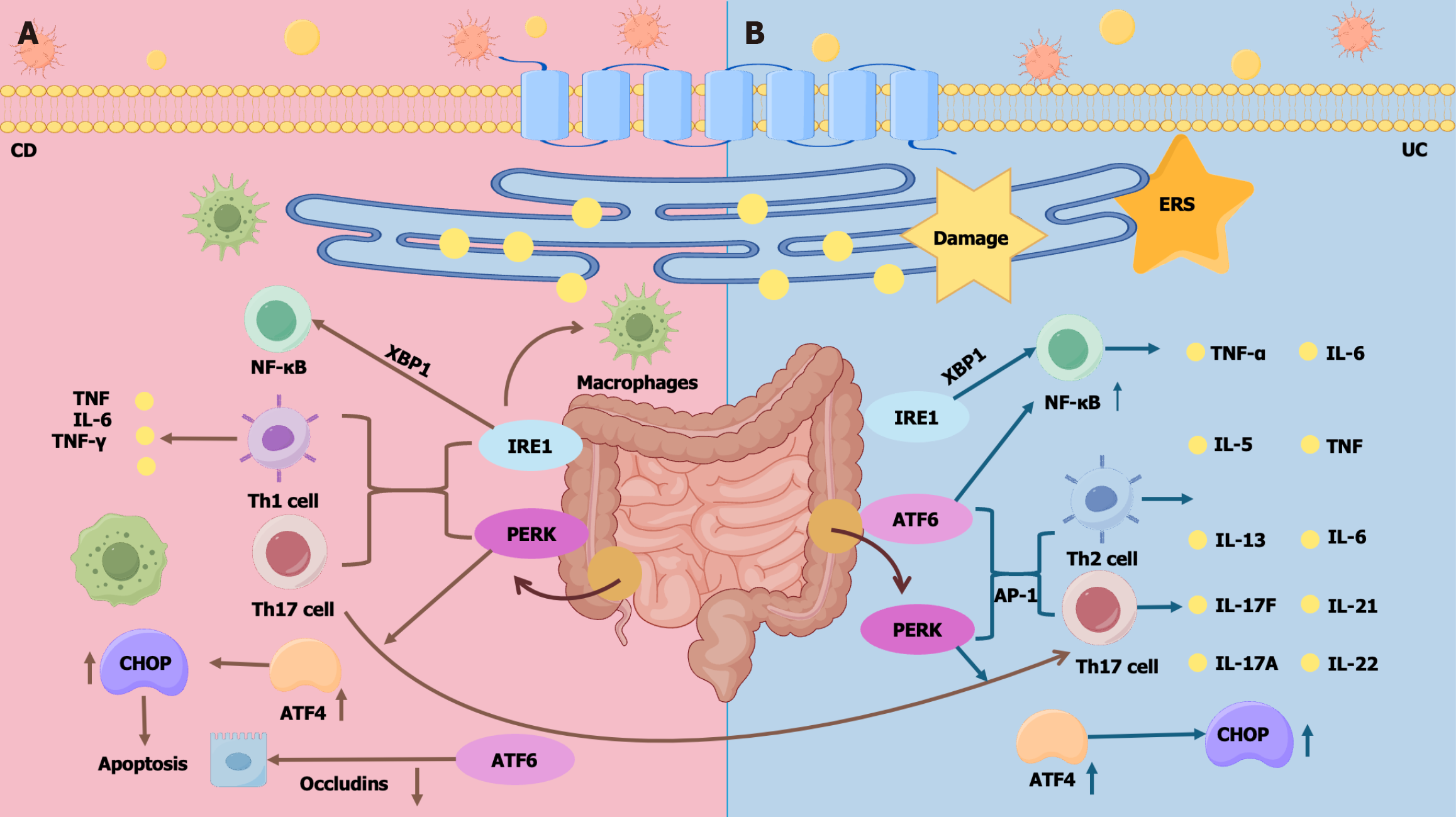Copyright
©The Author(s) 2025.
World J Gastroenterol. Apr 7, 2025; 31(13): 104671
Published online Apr 7, 2025. doi: 10.3748/wjg.v31.i13.104671
Published online Apr 7, 2025. doi: 10.3748/wjg.v31.i13.104671
Figure 5 Comparison of ulcerative colitis and Crohn’s disease in three pathways.
A: Crohn’s disease can happen anywhere, from the mouth to the anal area, and it can affect the plasma membrane layer, it can also cause the intestinal wall to thicken, strictures to form, and fistulas to form; B: Crohn’s disease may exhibit dysfunction in the regulation of T- and B-cells, which has been associated with immune cell functional abnormalities due to endoplasmic reticulum stress. CD: Crohn’s disease; UC: Ulcerative colitis; ERS: Endoplasmic reticulum stress; TNF: Tumor necrosis factor; IL: Interleukin; NF-κB: Nuclear factor kappa B; XBP1: X-box binding protein 1; IRE1: Inositol-requiring enzyme 1; PERK: Protein kinase RNA-like endoplasmic reticulum kinase; Th1: T helper cell 1; ATF6: Activating transcription factor 6; ATF4: Activating transcription factor 4.
- Citation: Zheng T, Huang KY, Tang XD, Wang FY, Lv L. Endoplasmic reticulum stress in gut inflammation: Implications for ulcerative colitis and Crohn’s disease. World J Gastroenterol 2025; 31(13): 104671
- URL: https://www.wjgnet.com/1007-9327/full/v31/i13/104671.htm
- DOI: https://dx.doi.org/10.3748/wjg.v31.i13.104671









